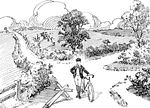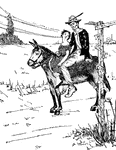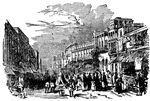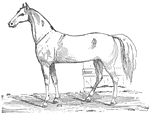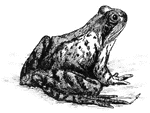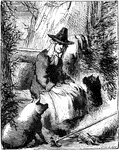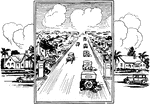
Battle of Pittsburg Landing
Recapture of artillery by the First Ohio and other regiments under General Rousseau, April 7, 1862.…
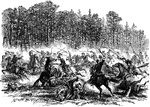
Sixth Regiment
"Gallant charge of the Sixth Regiment, United States Regular Cavalry, upon the Confederate Stuart's…
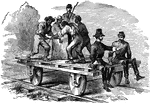
General Burnside
"Traveling in state"- General Burnside on the road from New Berne to Beaufort, N. C.
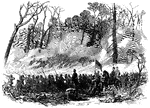
Battle of Shiloh
"Battle of Shiloh, or Pittsburg Landing, left wing- the woods on fire during the engagement of Sunday,…

Attack at Harrisonburg
"Gallant attack by 150 of the Pennsylvania Bucktails, led by Colonel Kane, upon a portion of General…

Camp Dennison
"Camp Dennison, sixteen miles above Cincinnati, on the banks of the Miami River, General Cox commanding-…

Engagement at Romney
"Engagement at Romney, VA., twenty miles from New Creek, Tuesday, June 11th, 1861- the Eleventh Indiana…

Battle of Charles City
"Battle of Charles City Road- charge of the Jersey Brigade- the first New Jersey brigade, General Tayler,…

Crossing of Shenandoah River
"Colonel Pilson's Battery shelling the rear guard of the Confederate General Jackson's Army, at the…

Howard's Bridge and Mill
"Advance of the Federal troops, near Howard's Bridge and Mill, four miles from Big Bethel, on the road…
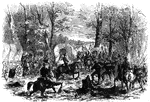
Lick Creek Bottom
"Advance of Federal troops on Corinth- the Carnival of Mud- scene at Lick Creek Bottom, between Pittsburg…

Blue Ridge Pass
"The victory at Blue Ridge Pass, Sunday, September 14th, 1862- infantry charge, and rout of the Confederates.…

Battle of Savages Station
"Battle of Savages Station. Brigadier General Smith's division hotly engaged with the enemy, at noon,…

Fort Runyon
"Section of Fort Runyon, Va., guarding the road to Alexandria, occupied by the Twenty-first Regiment,…

Cavalry of General Banks
"A reconnoitring detachment of General Banks's cavalry, Hyattstown, Md., in the distance. There are…

Fort Thompson
"Bombardment and capture of Fort Thompson, thirteen guns, near New Berne, on the Neuse River, by the…
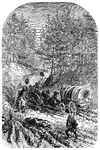
Federal Baggage Train
"Federal baggage train on its way to the army at Falmouth, VA., December, 1862. Our illustration represents…

Reconnoissance
"Reconnoissance by Colonel Max Weber's Turner rifles in the vicinity of Newmarket Bridge, on the road…

Confederate Position
"Confederate position near Centreville, Va., at the crossing of the Orange and Alexandria Railway over…
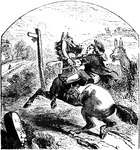
John Gilpin
Gilpin speaks to his horse. "I am in haste to dine; 'Twas for your pleasure you came here, You shall…

Battle of Gettysburg
"Battle of Gettysburg, Cemetery Hill during the attack of the Confederates, Thursday evening, July 2nd,…

Battle of Chancellorsville
"Battle of Chancellorsville, Va., Friday, May 1st, 1863. We give a fine sketch of the point where the…

Battle of Chancellorsville
"Battle of Chancellorsville, Va. Attack on General Sedgwick's Corps. on Monday, May 4th, 1863, at 5…

Battle of Blue Ridge Pass
"Battle of Blue Ridge Pass, Sunday, September 14th, 1862- the first Federal victory in Maryland. On…
Commissariat Depot
"Commissariat Depot of the United States Army of the Rappahannock at Manassas, Va. Our sketch shows…
!["The Plantation Police, or Patrol, was an institution peculiar to the Slave States. It was a semi-military organization, raised and supported by the planters, but recognized by the old State authorities. Their principal duty was to visit the various plantations and patrol the roads at night, arresting all [African Americans] and others not having proper passes. The war, the President's proclomation, and the actual possession of most of the State of Louisiana by the Federal authorities, rendered these patrols doubly rigorous. Some of the [African Americans] submitted reluctantly. The [African American] in the foreground is a speciman of this class. He seems to yield to the superior force of a tottering power, satisfied that his day is at hand; others show the obsequious, submissive stamp- the [African American] satisfied with his lot if he is clothed and fed."— Frank Leslie, 1896](https://etc.usf.edu/clipart/11600/11643/plant-police_11643_mth.gif)
Plantation Police
"The Plantation Police, or Patrol, was an institution peculiar to the Slave States. It was a semi-military…

Stafford's Store
"Going into camp at Stafford's store, Va. Third Brigade, Third Division, Sixth Corps, carrying off rails…

Cumberland Gap
"Cumberland Gap and Heights, Tenn., from the Kentucky side. Cumberland Gap was a place of such importance…

Battle of Coal Harbor
"Grant's Campaign in Virginia. The Battle of Coal Harbor, June 1st, 1864. On the 1st of June the Confederates…
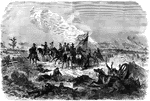
Battle of Chickamauga
"Battle of Chickamauga, Ga., September 19th-20th, 1863, between Generals Rosecrans and Bragg. Our sketch…

Entering Clinton
"General McPherson entering Clinton, Miss. To facilitate the movements of the Federal armies near Chattanooga…

Battle of Spottsylvania
"The war in Virginia. Battle of Spottsylvania Courthouse- opening of the fight at Alsop's Farm, May…

Hooker's Battle
"The war in Tennessee. Hooker's Battle above the clouds, and capture of the Confederate position on…

Fort Stevens
"The operations near Washington, scene of the fight in front of Fort Stevens, July 12th-13th, 1864.…

War in Louisiana
"The war in Louisiana. General Banks's army, in the advance on Shreveport, crossing Cane River, March…

War in Georgia
"The war in Georgia. Wagon train passing Resaca at night. Our correspondent wrote: 'No general probably…

Canton Road
"The war in Mississippi- General McPherson driving the enemy from their position on the Canton Road,…
Rural residential area
Two figures play tennis across the road from a pair of sparsely distributed houses.

Battle of the Wilderness
"The battle of the Wilderness, between General Grant and General Lee, May 5th and 6th, 1864. Our sketch…
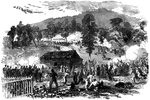
Battle of Rich Mountain
"The battle of Rich Mountain, Beverly Pike, Va., between a division of Major General McClellan's command,…

Battle-ground
This view is taken from near the house of Mr. Neilson, looking northwest. In the foreground, on the…

first interview
Site of the first interview between Gates and Burgoyne. This view is taken from the turnpike, looking…
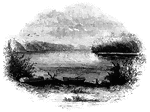
Fort Miller
Fort Miller fording-place. This was the crossing-place for the armies; and there are still to be seen…
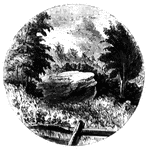
William's Rock
William's Rock. This view is taken from the road, looking northward. In the distance is seen the highest…

Battleground near Fort Anne
Battleground near Fort Anne. This sketch was taken from the rail-road, looking north. The forest upon…
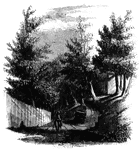
Wolfe's Ravine
Wolfe's Ravine. This scene is about half way up the ravine from Wolfe's Cove, looking down the road,…

Oriskany
The battle-ground of Oriskany. This sketch was made from the eastern side of the ravine, looking west.…

Little Falls
View at Little Falls. This view was taken from the rail-road near the village, looking down the river.…

Campbell Mansion
Mansion of Judge Campbell. This pleasant dwelling is upon the northern verge of the town, on the road…

Brant's Rock
Brant's Rock. This rock, which is about four feet high, lies in a field on the left of the road leading…
